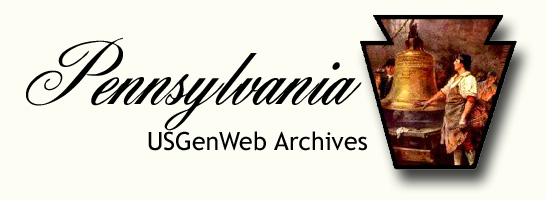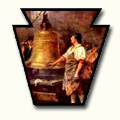|
A History of Pittsburg and Western Pennsylvania Troops in the War
By John V. Hanlon (Copyright 1919 by The Pittsburg Press)
Chapter XXI (cont.)
(The Pittsburg Press, Sunday, July 20, 1919, page 78)
[Transcriber’s note: The beginning of Chapter XXI was printed in the July 13,
1919 issued of the Pittsburg Press which is not available.]
Names in this chapter: Bacon, Cobb, Mathewson, Alderdice, Hornbostel,
Haughton
MEN FROM THIS SECTION OF THE STATE WERE AT THE HEAD OF MANY OF THE IMPORTANT
TASKS ALLOTED TO THE CHEMICAL WARFARE SERVICE OF THE ARMY. MANY USEFUL AND
DESTRUCTIVE DEVICES FOR COMBATING THE ENEMY WERE INVENTED AND MANUFACTURED AND
PROGRESS WAS MADE TO SUCH AN EXTENT THAT THIS ARM ALONE WOULD SOON HAVE BEEN
ABLE TO EITHER FORCE THE ENEMY TO SURRENDER OR BE ANNIHILATED.
While the Germans were enjoying their little game of
“kriegspiel” things were happening. Col. Bacon, in France, needed at once a
first class laboratory. For a time it appeared as if the success of the United
States gas and flame effort depended upon getting a laboratory, a good
laboratory, in a marvelously short time at the test field of Chaumont, where
headquarters was located.
“You want too much all at once,” Bacon heard on one
side, and on the other, “It can’t be done, y’know.”
Bacon didn’t pretend to be an Alladin [sic], nor would
he have rubbed a lamp if there had been one available. But he took the
alternative of rubbing C. G. Fisher, president of the Scientific Materials co.,
of Pittsburg. With the first suggestion, almost the first “rub” one might say,
the idea appealed to Mr. Fisher. “How soon do you want it?” was his query. “It
is needed at once, has been needed for some time, but we would like to have it
in any reasonable time – say two months,” as the reply.
LABORATORY FINISHED
In one month the best equipped laboratory in France of
England was humming along under full steam at Chaumont.
The first thing Fisher did was to list every conceivable piece of necessary
apparatus. And then his own company and every company and laboratory in the
United States which held any especial instrument or piece needed, shipped it to
France.
Col. Bacon himself termed it “not the best equipped WAR
laboratory, but the BEST EQUIPPED LABORATORY in all France of England.”
The Chaumont experimental field is 20 square miles in
extent. On the field are physiological and pathological laboratories. Trench
systems and artillery batteries are laid out. All ideas are tested on a full
battle scale. Following are a few of the results:
In the Argonne forest our troops encountered a great
system of machine gun nests. The Germans had developed the machine gun to a
tremendous efficiency. Recourse was made to the chemical division to solve the
problem. It was a big problem but the Division couldn’t afford to fall down on a
solution to it. Besides every day of delay meant that the nests were being set
upon by good old doughboys who perished by the score for every gun that was
captured.
The special “gas and flame” troops set up machine gun
nests at Chaumont and experimented. Before a week had elapsed the doughboys were
welcoming gas and flame units equipped to throw thermite bombs and liquid fire
over the nests. “It solved that problem,” laconically commented Col. Bacon.
GERMAN GAS EFFECTIVE
The heaviest utilization of gas, however, came with the
German March offensive. While the British claimed to be aware of both the time
and the place of attack they were apparently surprised by the enemy, who “walked
all over them” – for a little while. The first army suffered tremendously, the
fifth army was obliterated. Why? It was a surprise tactic in gas warfare. The
Britons held like heroes, to their glory, as they had held before at the second
battle of Ypres in 1915 when the gas first struck them. Both times the German
army could have gone on through – but, with all their preparation, they
committed the fatal error or not having enough gas to “carry on.” “This fault,”
says Col. Bacon, “was the only thing that saved the allied armies from defeat.”
The British system of defense up until March, 1918,
consisted of a lightly-held advance trench line with heavy groups of artillery
and machine guns immediately behind the lines, entrenched on enimences
controlling certain fields of fire by a crisscross zone of action. All spots of
the field could be fired upon and drenched with barrages. The theory was that
the German troops might possibly come over and take a portion of the lines, but
they, if it happened to be a mere trench raid, would be immediately ejected by a
drench of artillery fire. If it were a general attack, the front lines would
fall, but the artillery from their secure eminences, which would have to be
captured one by one, would place a double barrage in conjunction with heavier
guns further to the rear, and the infantry in support trenches would move up and
counter attack after the guns had cut off the enemy mass from retreat.
In the March offensive the Germans developed a mustard
gas shell, threw it in great numbers upon the buttressed eminences and silenced
the big guns to a great extent. They then placed gas shells over the support
trenches and fired gas so heavily that in the Montdidier sector alone, on a
five-mile front, 300,000 shells of six-inch caliber and larger were sent over in
the space of 24 hours.
The support troops, due to casualties and incapacitated
by being compelled to wear their masks for 24 hours before when the attack came,
couldn’t go into action.
The enemy attack infiltrated between the fortresses. There was no active
infantry to meet it and what appeared to be a great German triumph was about to
be enacted. That the war was not won then and there, according to the gas and
flame men, was only due to the magnificent willingness of British troops to
stand until whole brigades were wiped out and to the fact that the German gas
was not so plentiful at the finale of the action.
In that action 80 percent of all shells fired were gas
shells. During the first two days of the attack, practically all the enemy fire
was gas. Sneeze gas would first be thrown to force the men to take off their
masks, then they would be dosed with deadlier gases. So the war had evolved into
one of gas into which the Chemical Warfare Division of the United States army
entered with a zest and won out over all.
“CAMOUFLAGE” GAS
The first use of “camouflage gas,” or innocuous gas
used to force the enemy to fight with masks on, while your own troops, being
aware of its harmlessness fought without masks, was used by the British, who
originated it. They began to build up huge stores of it along the front for a
great surprise attack. But German agents became possessed of the secret and the
enemy “beat us to it,” as one officer expressed himself. It was largely used by
both sides.
In the latter months of the war the department under
Col. Bacon had felt that German chemists were becoming scarce. It is a custom
for the chemists of one side to analyze the “duds” or shells which fail to
explode, of the enemy. So the Americans, in order to keep the German chemists
busy, too busy to have the time to make researches and evolve new admixtures,
began to fill hundreds of shells with a mixture of all kinds of strange
solutions, anything, in fact, that the wags among them happened to think of.
Those they threw over to Fritz with sufficient charges to explode, whereupon he
recovered them assiduously and sent them back to his chemists. This is how the
report was born in Germany in the later days, that the Americans couldn’t make
good shells. The Boche was too dumb to see the joke – until it was too late.
GERMANY EQUALLED
When the mustard gas shells were first issued to the
German batteries, their infantry was informed of the dread properties of the new
invention – which by its mistral blight would win the war. This enhanced their
morale very greatly – until the Allied batteries began to throw the same stuff
at them. Then they had much cause for introspection. Upon finding they were
being handed a thing that their own government had told them was so very
dreadful, it detracted from their morale.
AMERICAN STRATEGY
It was about August, 1918, that Quartermaster-General
Ludendorff began to issue his “advice to the troops,” dealing with the
idiosyncrasies of American gas. Berlin was beginning to realize that, after all
they had judged the United States correctly.
Another little game that Fritz usually used to fall for
was played like this: The infantry of a sector of trench line would be withdrawn
and their trenches filled with mustard gas. Then Jerry would find out about the
withdrawal and get his orders to “go over” and occupy the trench. When he
reached our line, a “box” barrage would be laid down on both sides and behind
him. The barrage would be moved gradually in and Jerry would wander into the
gas. It was a nasty trick, but the doughboys couldn’t be convinced that it
wasn’t a good one.
In July, 1918, the United States Chemical Warfare
Service organized a “Board of Strategy.” The principal consideration in gas
warfare, next to discovering deadlier mixtures than those in use, is the
strategy utilized in applying the gases already possessed. The enemy doesn’t
come up and plead to be gasses. Means to lure him into gas traps must be
devised.
BOARD OF STRATEGY
Nobody ever heard of such a board of strategy before,
but this one “brought home the bacon.” The German may be a slow thinker but at
the same time he is wily. Someone conceived the idea of taking natural quick
thinkers and forming a “strategy board” to “think up” new methods of coercing
Jerry out into the open for American gas displays.
So Tyrus Cobb and Christy Mathewson, baseball artists,
and Percy Haughton, football coach, and Henry Hornbostel, architect, were formed
into a board “to wander up and down the lines doping out strategy.”
The architects, for instance, would be expected to
incline toward art and beauty in his suggestions. Here was a good one. At his
suggestion an aeroplane rose over the German trenches and commenced to fire off
a lot of beautiful fireworks. This happened in the evening, about “retreat”
call, when mess was being served. Then, for three evenings in succession the
plane arose and fired it pyrotechnical display – with no bombs or intent to
injure Jerry in the least. The one concern of the Americans was to show him a
good time.
On the fourth evening Jerry was out of his dugouts
taking in the show of fireworks when a couple tons of gas were drenched over
him. When the Americans arrived in his trench he wouldn’t or couldn’t welcome
them. Each German fell where he stood rubber-necking.
HOW PROJECTORS WERE USED
Another little stunt Col. Bacon’s men cooked up to
reduce the German molar movement into molecular movement concerns a tactic with
the Levins projector, a tube placed in the ground outside the trench system and
connected by pipe line with the trench. These were always handled by the special
gas and flame men. Needless to say the infantry always had very definite
misgivings when these men appeared, for they would set up their gas apparatus,
open the cocks, and “let ‘er fly.” They would then get out of the vicinity while
the German artillery, in an effort to “kill” the gas, pounded the sector – the
doughboys taking the punishment.
Always the German artillery retaliated for these
displays. So, as it was becoming apparent that the enemy was in the throes of a
lack of heavy caliber ammunition, these Levins projectors would be installed and
opened up. The doughboys would [unreadable] the trench – and Jerry would bombard
the field until he got his fill of it.
Thousands of these little flourishes along the lines by Col. Bacon’s jesters
caused the German command to indite [sic] various “protests” to neutral powers
against Yankeedom for its little pleasantries. They reasoned that it wouldn’t be
such a bad thing to stop playing with the A.E.F.
Also it might be noted that when the German artillery
would concentrate on the Levins projectors the Yankee guns would take full
advantage of the event by noting the placement and ranges of the German opponent
– and then force him to move his guns or have them destroyed one by one. And
then, adding insult to injury, Yankee infantry usually chose that time to attack
when German heavy guns were not in a position to rake them.
PITTSBURGER AIDS SERVICE
A cablegram sent by Gen. Pershing in August, 1918,
reads: “Unless Levins projectors arrive offensive must stop.” It doesn’t make so
much difference who that cablegram was addressed to, but it is interesting that
it was here again that a Pittsburg firm saved the day.
Through the efforts of Mr. Taylor Alderdice, in three
days the National Tube Co. was turning out Levins projectors in capacity
production. They arrived on time!
AMERICAN CHEMISTRY SUPREME
The close liaison of United States chemists with the
chemists of France and England has been productive of many lessons to all
concerned. But to those who fear for the future of American chemistry, or that
United States chemists can not hold their own with Europeans in peace times,
Col. Now Dr. Bacon, for he’s back at his old post as director of Mellon
Institute, has to say that he has found United States factories infinitely
superior to their European competitors.
Not only is their equipment better but he assets that with the multifarious
labor saving devices in American plants we can compete on equal terms with
Europe despite the cheaper labor abroad.
An interest problem will have to be met in France in
the next few months, the destruction of the millions of tons of stored deadly
gases which were to have been used in the February offensive. As it would be
extremely dangerous to the public to release it under any conditions imaginable,
the probability is that it will be burned with crude oil.

Filling of shells with phosgene. These men work under battle discipline and
suffer casualties, too.

Phosgene in drums ready for overseas shipment. Each drum holds 1,630 pounds.

Edgewood Arsenal, Edgewood. W. D. shell filling plant.
|






